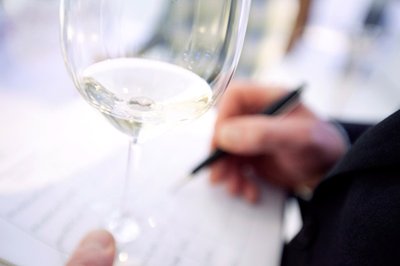Spain: Duero Valley, including Rueda, Ribera del Duero
No surprises that Rueda should put up a decent showing again in SWA, but the performance by Ribera del Duero and Toro was a bonus after years of underdelivery
Containing two of Spain’s powerhouse red and white regions – Ribera del Duero and Rueda – we had every right to expect some impressive wines here. And both pretty much managed it. White-wise, our tasters found a string of medal-worthy wines all more or less under £8, which, in a year where affordable white wine (even unoaked) has been at a premium, is encouraging.
 As journalist Sarah Jane Evans MW pointed out, this is a class of wine that restaurants may need to work a bit harder to sell, but it’s worth the effort, with crisp aromatic Sauvignon-style whites something that Rueda does really well.
As journalist Sarah Jane Evans MW pointed out, this is a class of wine that restaurants may need to work a bit harder to sell, but it’s worth the effort, with crisp aromatic Sauvignon-style whites something that Rueda does really well.
Of course, not everything went according to plan: there were some that went a little too far in the pungency, some that were plain dilute and others that had a yeasty character on the nose. There was some bemusement, too, at the general dearth of screwcapping.
‘What you want from this style is that nettle character,’ said The Boundary’s Chris Delalonde MS. ‘Sometimes the screwcap can give more fruit and lift.’ In fact, the Gold-Listed Alvarez y Diez was richer than most, with peachier characters, spice and minerality alongside the more trademark citrus.
The Duero Reds section was one of Spain’s largest outside Rioja. But though there were wines from Arribes and Cigales, it rapidly became a battle between Toro and Ribera del Duero, as you might expect.
What you might not expect is that Ribera put in a decent performance at the affordable end of things, as well as doing its usual showing off in the ‘look at me, I’m oaky and expensive’ area too. Toro, meanwhile, pitched its tents in a circle around the £7-£10 mark.
In the past, neither of these regions has really delivered much in SWA, so it was good to see them attracting positive comment, with the tasters happy (for once) with the use of oak. Spicy, yes, but integrated – these were well-made wines. There was an acceptance, too, that many of the wines would improve with age.
‘I thought they would be higher in alcohol,’ said Hakkasan’s Roberto Loppi, ‘but the wines were fresh. I think Rioja probably still has more of a reputation and more strength on the wine list at the moment, but I think we could start to see more Ribera By the Glass.’
‘There were some lovely expressions of traditional winemaking here,’ said consultant Caspar Auchterlonie. ‘They were not extracted with huge oak, but wines made with old vines. There was strong consensus among the tasters.’
The result: a good mix on the Gold List, with the affordable Ebeia de Bodega Portia – ‘good smoky, spicy richness behind the fruit’ – and the ‘bigger, fuller more serious’ Pago de los Capellanes.
‘It was interesting to see that the reds were quite reasonably priced – and I’m quite focused on the price these days.’ Philippe Loiseau, Hakkasan